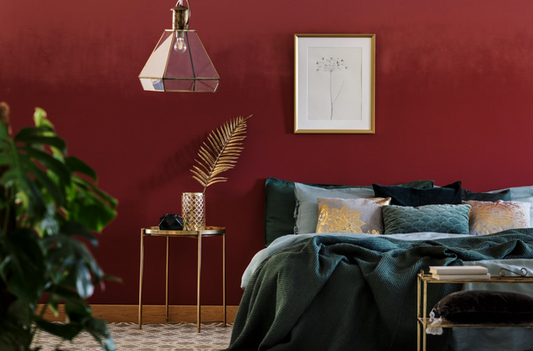In the business world, appearance and perception are a big part of the shared marketplace. In your office, with business partners, and dealing with customers… What people see is what they will respond to. This is exactly why hidden architectural methods like hidden doors, slide-open panels, and subtly disguised storage furniture are the hallmark of modern corporate design. There are many business uses for hidden doors to optimize your space both functionally and aesthetically at the same time. Businesses have been using these techniques for centuries, from hiding safes to disguising the entrance to staff areas. Let's talk about eight of today's best ways to use hidden doors and storage in your office design:
1. Reveal and Hide Conference Room Features
Conference rooms and presentation spaces need a rack of features and technology. Sometimes, you may need projector screens and low lights. Sometimes, you may need interactive teleconferencing with a half-remote team.
You can even up-scale or down-scale your presentation areas and conference rooms with sliding hidden doors. Reveal impressive art pieces or hide them for a more informal meeting. Alternatively, you can double or halve your area with a hidden divider wall. Any of these business uses for hidden doors make your conference room more streamlined.
2. Secure the Privacy of Back Offices or Staff Areas
Staff areas do not need building visitors or customers walking through them. Whether there are private offices or maintenance zones, it's best to prevent the unaware from entering your company's behind-the-scenes areas. A hidden door from the public areas can provide access, emergency exits (not hidden on the backside), and a cleverly smooth design for public-facing spaces with nothing to pique curiosity.
3. To Optimize Space and Storage
Sometimes, you need office supplies or service equipment stored nearby, but not in sight of the customers. Cabinets and backward-facing counter shelves are often the answer, but your business can do better. Use hidden and built-in cabinetry to provide both decor and convenient nearby storage needed on hand for the daily workflow.
Hidden doors also make it possible to turn one room into a storage room without it being apparent, as all others will see is a built-in shelf.
4. Discourage Access to Secured Equipment
Some equipment is not supposed to be touched often, but access is necessary for maintenance and occasional repairs. A server bank room, for example, would benefit from a hidden door to discourage unwanted and frankly risky visitors. Only authorized and scheduled technicians should visit certain rooms, and they can be the few who know about the hidden door.
5. Hide Wall Safes to Discourage Theft
Since the dawn of wall safes, businesses have found ways to disguise their locations with hidden doors and built-in cabinetry. The sight of a safe can inspire temptation in otherwise reliable people, and hiding the safe makes things more difficult for anyone with intent to do harm. While placing a painting over the safe is now too obvious, there are many other ways to hide a safe, including disguising that the compartment is there behind other built-in features.
6. Disguise the Executive Bathroom
Executive bathrooms are one of the luxuries of some exclusive office designs. In reality, these corporate powder rooms are necessary for execs to maintain their appearance of 24/7 perfection as the company’s faces. But no one else needs to know that the corporate bathroom is there. A hidden wall panel, cabinet, or bookcase can provide your executives with absolute in-office privacy — not to mention an unforgettably stylish office feature.
7. Secure the Storage of Firearms and Dangerous Items
More often than consumers realize, a business must store and even sometimes use dangerous materials. Poisons, cleaning chemicals, high-powered equipment, and firearms are all in the lethal category of things that companies often deal with behind-the-scenes. When you have dangerous items on the premises, and, especially if they must be nearby, it's best to keep their location disguised and access limited on a need-to-know basis.
With hidden doors and furniture, you can create that storage without creating the temptation to investigate or highlighting the location of dangerous items — outside, of course, the required safety sign postings.
8. To Maintain Ambiance in Decorated Spaces
The last use of hidden doors is to maintain the decor of a well-decorated space. Gardens and courtyards, for example, can maintain their leafy beauty with less interruption if the doors blend with the decor. From elegant lobbies to theme parks, hidden doors maintain the integrity of decoration even if an exit is necessary in an inconvenient or public location. With the right hardware, you can turn any door into a hidden door.
Enjoy These Business Uses for Hidden Doors With Products From Murphy Door
Is your business planning a new office location or remodeling project? There are plenty of business uses for hidden doors and fold-away features. Each one makes it easy to keep your space both beautiful and versatile. Contact us for kit or custom hidden doors for your new office design.





